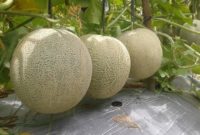Gardeners who want to save water with wise irrigating techniques might consider an unusual approach: plant crops that don’t require much water in the first place.
“Some vegetables, such as beans, are adapted to drought conditions at a very basic, cellular level,” explained Jim Myers, professor of horticulture at Oregon State University. “Tepary beans grow successfully in desert and near-desert conditions. They are native to the American Southwest and have been a staple food crop there for hundreds, or probably thousands, of years. I have grown them successfully in Oregon.”
Beans in the cowpea group, such as the familiar black-eyed pea, also have this characteristic. The black-eyed pea needs little water and grows poorly if watered too much. “However,” Myers said, “the cowpea beans need heat to mature, and our cool nights can limit growth and reduce seed set. The same is true for okra.”
Some common beans, like snap beans and pole beans, require a short growing season and can set a crop on small amounts of moisture.

Tomatoes, squash and melons establish deep root systems quickly and can draw moisture from the deeper soil long after the surface has become dry in midsummer, Myers said. “There’s also a zucchini variety (Dark Star) bred for its ability to grow under dry-land conditions with roots that seek out the water table.”
“As long as these vegetables have water early in their growing season, they tolerate drought,” Myers said. “In fact, many tomatoes actually do better if you cut off irrigation in mid- to late summer.” Cutting the water also reduces the ability of certain fungal and bacterial diseases to take hold.
By and large, cool-season crops are not drought-resistant. These include cool-season legumes such as peas, lentils and fava beans, and the crucifer crops: Brussels sprouts, cabbage, cauliflower, collards, kale, kohlrabi, mustard, broccoli, turnips and watercress.
Sweet corn and lettuce are shallow-rooted and don’t do well without a lot of water.
In addition to using well-known water-saving techniques such as drip irrigation and mulching, try grouping your vegetables according to their water needs. In general, give your vegetables no more water than they need –rather than as much as they can withstand.
